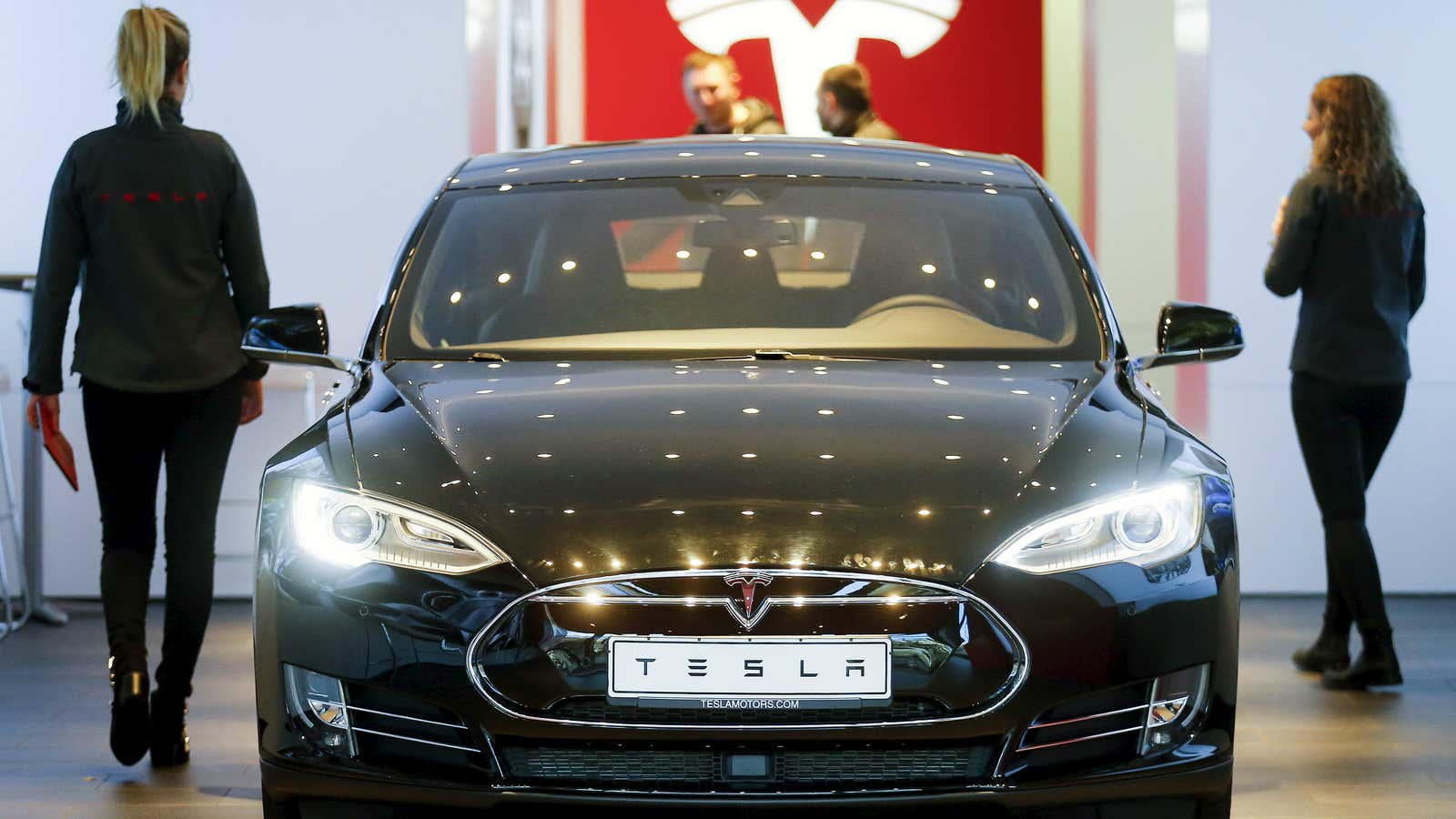Hong Kong
With its narrow streets, dense population, and tiny residential spaces, Hong Kong was not built for car ownership. Yet Tesla’s distinctive Model S is doing well here. The high-end electric car is now a common sight, whether idling at traffic lights in the congested Central district, snaking up the hills to Victoria Peak, or cruising down to the beach at Shek O.
Tesla, it turns out, has been getting help from the government.
In an effort to curb pollution, Hong Kong heavily taxes newly registered vehicles—in many cases by more than 100% of the vehicle’s sticker price. Such taxes have been waived entirely for electric vehicles for the past 18 years. Earlier electric vehicles (EVs) that came to Hong Kong suffered sluggish sales for the same reasons they flopped elsewhere: a lack of charging infrastructure and generally low battery life.
But Model S sales have shot up in the past two years in one of the most high-end car markets in the world (Hong Kong’s best-selling car in 2012 was the Mercedes E-Class). Sure, Tesla owners here are fans of the company and founder Elon Musk, Sony Wong, 40, a Tesla-owning investment company director tells Quartz. “But,” he said, “I think the critical driving force in Hong Kong is still the tax waiver.”
Here’s how it breaks down:
Hong Kong’s tax waiver on EVs are even more generous than in Norway, where cushy incentives also helped spark a booming business for Tesla.
Consumer registrations of EVs has boomed accordingly over the past two years in Hong Kong. This year alone could see more than 2,000 new plug-in cars on the road.
Tesla declined to reveal sales figures for Hong Kong, citing company policy. But Charged.hk, an EV enthusiasts group, estimates that there were 2,279 EVs on the road as of June, and that 70% of them were Teslas. Electric vehicles now account for about 3% of new vehicle registrations in Hong Kong. That might seem low, but it’s high compared to other developed markets.
Hong Kong’s compact size might also help drive EV sales. The Model S can travel over 400 kilometers (about 250 miles) on a single charge. That limitation might worry some drivers in larger countries, but Hong Kong has only 2,100 kilometers of total road, so “range anxiety” is less of an issue.
Mark Webb-Johnson of Charged.hk says Hong Kong’s Tesla owners tend to use their cars to commute. “A lot of people have petrol cars that they use on weekends, but during the weekdays they use public transport,” he tells Quartz. “The majority of the electric car owners are doing more driving on the weekdays.”
The government has provided an additional boost for Tesla (and other EV makers) with its rapid installation of public charging facilities. In 2012, the government pledged to bring total charging facilities to 1,000 by the end of June. The number has since increased to 1,200—about two EV cars per public charging stall. That’s far more stalls per vehicle than other markets like London, which has 1,300 charging spots (paywall) for about 20 times as many EVs.
A high density of public charging stations helps in other ways, too. Since most Hong Kong car owners live in high-rise apartments, much of one’s charging takes place out in the open, rather than in private garages.
Still, Tesla’s Hong Kong boom might be short-lived. With a population of just over 7 million, there’s only so much demand for cars. Also, the tax incentives that helped spark EV sales are set to expire in 2017, and some officials favor redacting them in order to reduce road congestion. EV sales stalled in Norway when its incentives were rolled back, and the same could happen in Hong Kong.
